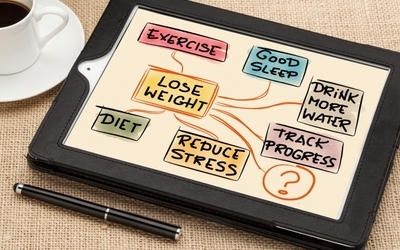How to Set the Course for Your Personal Weight Loss Journey
We all have different reasons for wanting to lose weight. Some of us just want to fit into that new dress while others what to enhance our overall wellness. Taking the first step in determining which programme to follow and which goals to set is probably the easiest thing to do in terms of effort, but this can still be a complicated step to take. At the end of the day, you are responsible for your own wellbeing, and the weight loss plan you eventually choose is, evidently, up to you. However, there are helpful hints available to shape the way you make that decision.
1. Acceptance and Reason: On an emotional and mental level, acceptance and reason are the hardest stages to overcome, and they often go hand in hand. If you’re overweight, say, this probably means your health is deteriorating. This usually goes alongside high levels of bad LDL cholesterol and high blood pressure. In this example, you need to accept that your current condition of health is due to your excess weight, and then this becomes your reason to lose weight: your immediate concern is to get to a healthy weight so that your wellness improves. As I’ve previously mentioned, everyone needs their own reason or driving force to help them achieve their personal weight loss goals – you just need to be true to yours.
2. A Clinical Perspective: If you’re planning on losing weight, that’s obviously going to have an impact on your health and body and so it’s extremely advisable to consult your doctor. In weight-related conditions, cardiologists and nutritionists are the go-to experts so start there. These medical health professionals can help you set your goals and decide upon the course of your weight loss journey without coming into conflict with your individual needs. If you have medical conditions or unchangeable lifestyle traits, for example, this will determine ultimately what you can and cannot do.
3. The Objective: Once you have your reasons and medical perspective in place, it’s time for you to actually engage in your weight loss and set a goal. This needs to be something specific and that you can reasonably attain. While setting a big end goal – like losing 40lbs overall – is a good idea, setting little objectives or check points along the way can help you to stay motivated. If you say you want to lose 10lbs a month, then all you have to do is focus on that one small goal instead of striving for the big one. Before you know it, in four months time you would have reached your 40lb goal without stressing 40lbs worth over it! Make sure all your goals – both big and small – are realistic. However, when you lose weight, you might find the number on the scale doesn’t move much as muscle weighs more than fat, so you might want to use a different measuring system like clothes sizes, BMI or waist size.
4. The Plan: Most dieters try to lose weight by just changing their food intake, or just by exercising, but the truth is you need both for effective weight loss. When it comes to what you eat, you need to consume enough calories to sustain your daily needs which, as you’re engaging in physical activities, will be a little bit more than you think. Dividing your daily food intake into frequent small meals rather than three large meals is a good idea. Eat fruits and vegetables, lean meat, dairy products, rice/cereals/bread, even chocolates – the key is to not deprive yourself but let yourself have a little bit so that you don’t crave more later on.


Comments are closed.